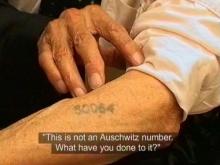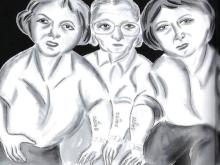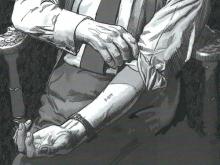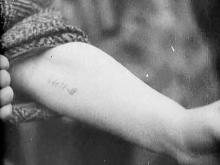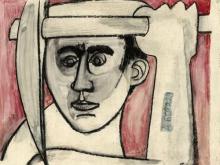Death Mills/Die Todesmühlen
DEATH MILLS/ DIE TODESMÜHLEN, Hanus Burger, Germany/USA 1946
The US-American film DEATH MILLS (1946) was one of the first using the sequence with the children in Auschwitz showing the numbers tattooed on their arms. It was intended to inform the American public about the atrocities committed by Germans over the course of the war. A German version with the title DIE TODESMÜHLEN directly addressed the German population and the question of guilt by confronting it with the graphic images from the liberated camps. The scene from Auschwitz plays a crucial role in the short film’s structure, though it mostly repeats how it was introduced by the Soviet film KINODOKUMENTY in context of the Nuremberg Trials. Interrelating the sequence with the shots that show children in prisoner uniforms walking in between barbed wire fences, the film’s montage and voice-over clearly introduce the position of the child survivors and emphasizes the specific fate of children in the camp. Interestingly, the voice-over does not refer to the inhuman medical “experiments” that provide the specific context of those children's experiences. Instead, it focuses on the question of a lost personality by replacing their names with numbers (which happened to all incoming prisoners who were not directly sent to the gas chambers and murdered). Thereby DEATH MILLS introduces the shots from the children with the Number Tattoos as generic iconization of the process of dehumanisation. The three shots are used in a direct manner. Transposing only parts with a voice-over, the montage further emphasises symbolic status of the images by keeping them silent, a technique that was repeatedly used also by later filmmakers.
